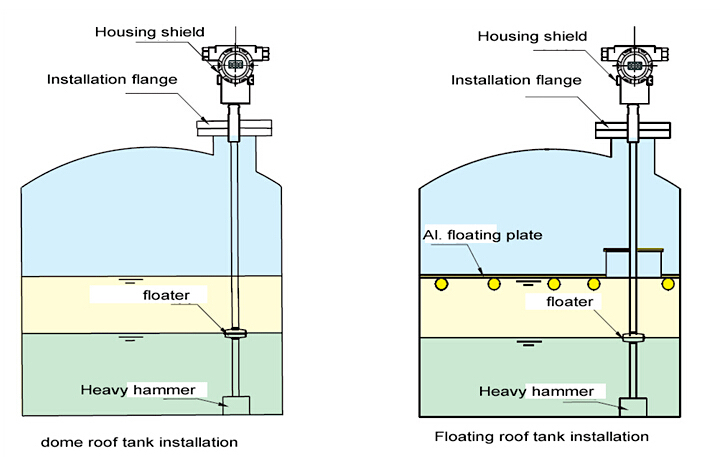Explosion-proof magnetostrictive liquid level gauge To prevent explosion, it is necessary to avoid the existence of three conditions for explosion at the same time. Since oxygen (air) is everywhere, it is difficult to control. Therefore, controlling explosive gases and detonating sources are the two most common principles of explosion protection. In the instrument industry, there is another explosion-proof principle: controlling the explosion range.

Common explosion-proof principles in magnetostrictive liquid level instruments
Explosive gas is controlled to artificially create a space without explosive gas in a dangerous place (we call an industrial site that has the three conditions required for explosion at the same time as a dangerous place), and install the instrument in it. The typical representative is positive Press-type explosion-proof method Exp.
In the process of production and manufacture of magnetostrictive level gauges, the maintenance of high-precision 0.1-level instruments in magnetostrictive level gauges is a relatively frequent event in industrial automation production activities. , and the maintenance of high-precision magnetostriction in medical wastewater treatment is very important:
1 When assembling and adjusting the instrument, the original position should be recorded in order to restore it.
2 When repairing fine instruments and meters, if you accidentally bounce small parts, you should first determine the position where they can fly, and you can use magnet scanning and visual field scanning methods to find them.
3. Do not consciously knock or touch during inspection to prevent the expansion of faults, which will worsen the more you repair.
4. It is not necessary to plug and unplug various control boards and plugs with electricity.
5 When testing the external circuit of the instrument, it is assumed that the contacts of the device components and the circuit board are coated with insulating varnish. When measuring the parameters of each point, an ordinary hand-stitched needle can be welded to the test pen of the multimeter, so as to pierce the paint layer and directly measure each point without having to Peel paint over large areas.
6 When checking the fault of the instrument in a humid environment, it is necessary to use a multimeter to measure whether the printed circuit can hysteresis at each point, because the important fault in this situation is the corrosion of copper foil.
7. When detecting the filter capacitor in the power supply, the positive and negative electrodes of the electrolytic capacitor should be short-circuited first, and the test lead wire should not be used instead of the wire to discharge the capacitor when short-circuiting, because the core wire is blown at will. You can take a 220V, 60~100W lamp with a lamp head lead and connect it to both ends of the capacitor. The bulb will flash when it is discharged.
8 When using a logic pen and an oscilloscope to detect signals, be careful not to let the probe touch the two measurement pins at the same time, because the essence of this situation is to form a short circuit under the condition of power-on.
When the temperature of the measured medium is high (100~200℃), it is recommended to select a probe with an outer displacer (option B in the selection table) and install it with side flanges. When the temperature is higher (200~300℃), it is recommended to choose the probe with side-bundled outer float (option C in the selection table), and use the side flange to install.
There are measurement dead zones at the upper and lower ends of the measuring probe rod, which should be considered when selecting the range.
Explosion-Proof magnetostrictive liquid level gauge commonly used stainless steel magnetic float size is Ф45 × 56 × Ф15, and must be connected with flanges of DN50 and above. For the liquid level gauge with threaded connection, the user needs to install the flange or bracket by himself.




